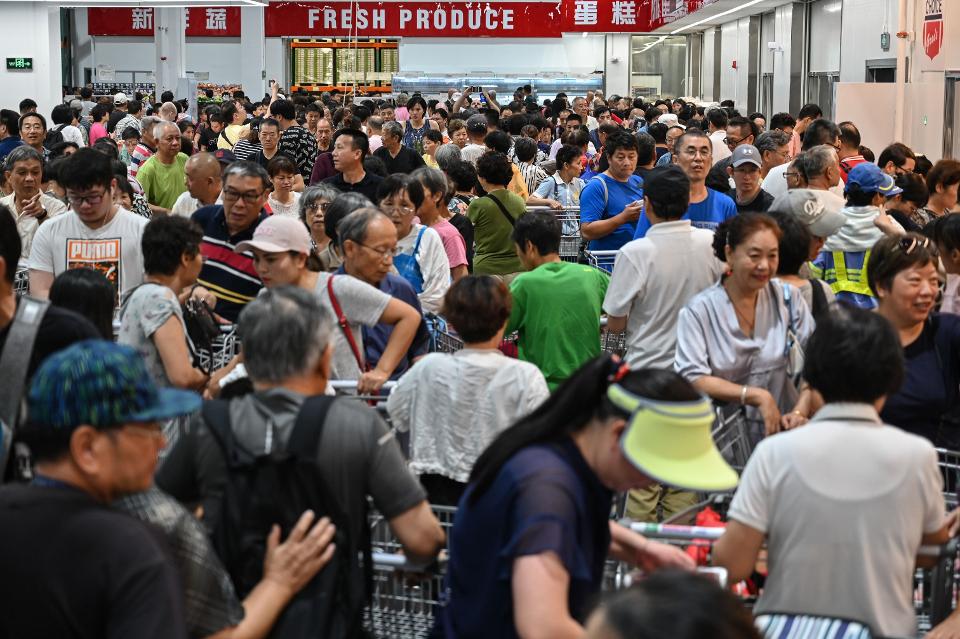Can Costco Succeed In China When Other Western Retailers Have Not? (by Warren Shoulberg, excerpted from Forbes)

They say everything in life is timing, so perhaps the folks at Costco are secretly wishing their timing was a little better.
Amid some of the worst Chinese-American relations since President Nixon’s visit to China in 1972, the giant American warehouse club opened its first store in the country this week, in a suburban district of Shanghai.
Opening day was encouraging, to say the least. Initial social media posts indicated it was wildly successful, with three-hour waits for parking spaces and half-hour delays at check-out registers, causing the store to close its doors for a short time.
Whether that grand opening hysteria extends to regular shopping days remains to be seen. Costco officials said they believed their low-cost, buy-in-bulk business model would appeal to Chinese consumers, and they could point to the relative success competitor Sam’s Club has had in the country. That Walmart division entered the Chinese market in 1996 and now operates 23 stores, with plans to roughly double that by the end of next year. It counts more than two million members.
But its success—and the track record Walmart has had with its own stores in the country—seems to be the exception to the rule for Western stores in the world’s most populous country. And with much smaller homes and significantly lower incomes than in the U.S., Chinese consumers may not be as open to the idea of one-gallon jars of mayonnaise and 36-packs of toilet paper.
Big retailers from both the U.S. and Europe have found out the hard way how difficult it is to translate their business models to the Chinese market, even in the best of times, much less when anti-U.S. sentiment is higher than it’s been in several generations.
Carrefour, the big French discounter generally recognized as the second-largest retailer in the world, became the latest to feel the pain, announcing earlier this year that it was selling 80% of its Chinese retailing operation to a local operator. Eventually the plan is to sell the remainder and exit the country entirely.
It joins, among others, Amazon, Home Depot and Marks & Spencer as American or European retailers to close up there.
The big dog that remains is Walmart, which continues to operate more than 400 stores in the country but has also said numerous times that it is less than pleased with how it’s going. In 2016, it sold its Yihoadian Chinese e-commerce business to the big online player JD.com.
The Carrefour move also involves a sale to a local company, Suning.com. Carrefour was one of the earlier Western retailers to move into China, opening its first store there in 1995. It now has 210 large combo stores with both general merchandise and food, its signature model in Europe, as well as 24 convenience stores. Together they did about $4.1 billion in sales last year, although the business continued to be unprofitable.
Suning, with close to 9,000 stores in 700 cities in China and what is reported as the country’s third-largest e-commerce operation, paid about $1.6 billion for its 80% stake in Carrefour.
Amazon’s decided this past spring to give up most of its activities in the country after facing enormous competition from Alibaba and others. It had been doing business in China since 2004, and while it will continue to ship into the country, it will be from other nations, including the U.S.
Tesco, another big European player, walked away from its Chinese operation in 2013—retaining a small share, as Carrefour is—while Marks & Spencer shut down its physical stores in 2016, followed two years later by its online operation. In 2012, Home Depot closed the last of what was once a 12-store operation it had purchased six years prior.
All of this activity leaves only a handful of Western retailers still operating in China, even as fast-food and luxury brands have thrived in the country. Toys "R" Us continues its joint venture in the country and elsewhere in Asia despite the demise of its American stores. And Aldi has just opened its first Chinese outlet.
The only truly successful retailer from the West to thrive in China has been IKEA, which came to the country in 1998 and now operates 29 locations plus four more in Hong Kong. The Swedish home furnishings operation has arguably been the most successful retailer in the world in expanding beyond its native country, with stores in more than 50 nations.
Why it has succeeded while so many others have failed is a subject of much debate—not to mention mystery. Certainly, its low prices and simple designs appeal to multiple cultures, particularly one such as China. But its ready-to-assemble platform would seem to run counter to the Chinese tradition of limited interest in do-it-yourself. When Home Depot left China, it cited that as a reason its DIY model failed there.
Taking any business model from one culture to another has been troublesome, no matter the direction. Overseas operations from Britain’s Tesco to Japan’s Takashimaya to, yes, Carrefour have all failed miserably when they’ve tried to launch U.S. operations—even as Germany’s Aldi and Lidl are having success here.
For Costco, the challenge will be to see if it can find a place in the Chinese market despite the headwinds, and trade winds, of the current times.
recommend